Betta fish, also referred to as siamese fighting fish, have been a popular aquarium fish for many years around the world. But they are not just a domesticated fish. In fact, wild bettas can be found throughout Asia.
There are many different betta fish types, each varying in color, length, and tail type and shape. There are solid colored betta, striped betta, spotted betta, and even albino betta fish.
Choosing the right type of siamese fighting fish for your aquarium is important to ensure your betta fish lives a long and happy life.
Types of betta fish
There are many species of betta fish. Selective breeding has led to betta fish having more desirable traits that an aquarist may look for.
Betta fish in the wild also look different than those kept as pets. Domesticated bettas differ from wild bettas in many ways. Domesticated betta fish colors are usually brighter in comparison to wild betta. Wild bettas also usually have shorter dorsal fins, caudal fins, and anal fins than that of a domestic betta.
This article highlights the four types of bettas within the bubble nesting families: betta splendens, betta imbellis, and betta mahachaiensis, and betta macrostoma.
Betta Splendens
Most betta fish you would find in pet stores are Betta splendens, also known as siamese fighting fish. However, there are many species of betta that fall into the betta splendens family.
Halfmoon betta
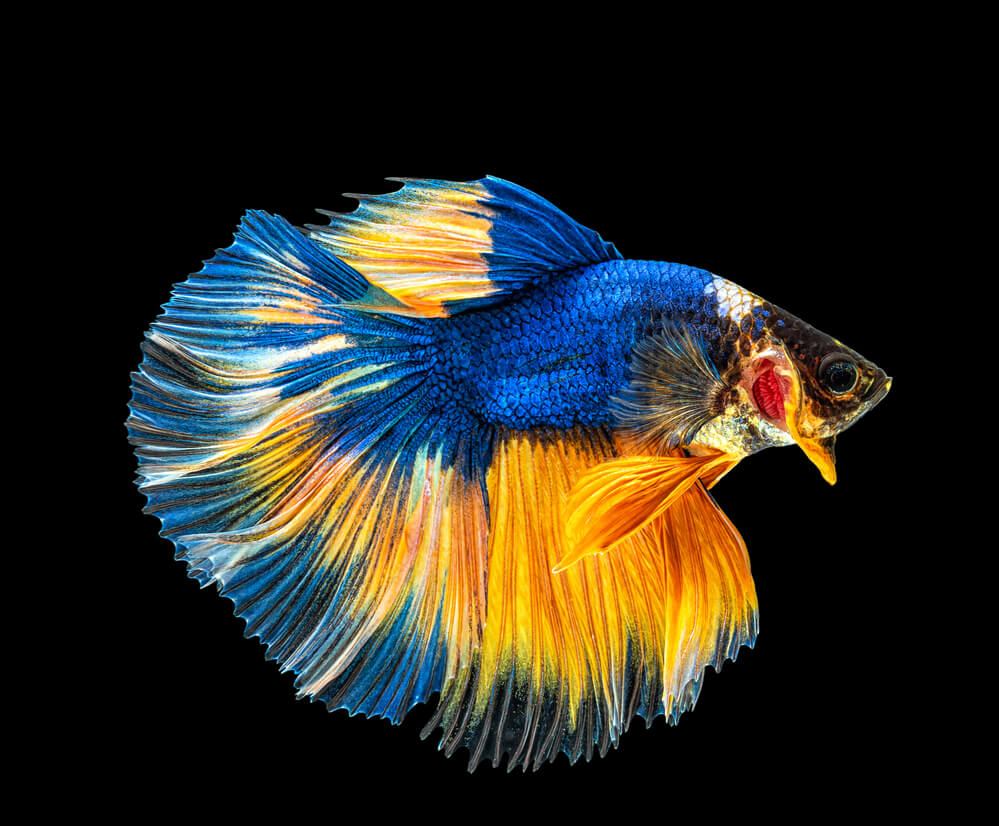
Halfmoon bettas are one of the most attractive types of betta fish. They come in many different colors like copper, brown, teal, black, red, white, and green.
Their tail shape is what gives them their name. Their large tails, when spread, looks like the letter D, and looks like a half moon.
Most halfmoon betta fish have bodies that are two inches long and tails that add another three inches, making a total of five inches in length.
Halfmoon bettas can be aggressive towards other fish, and other types of betta fish, and will fight to the death if necessary. It’s important to keep male halfmoon betta fish separate from one another or else you risk dangerous fights between the two.
Plakat betta
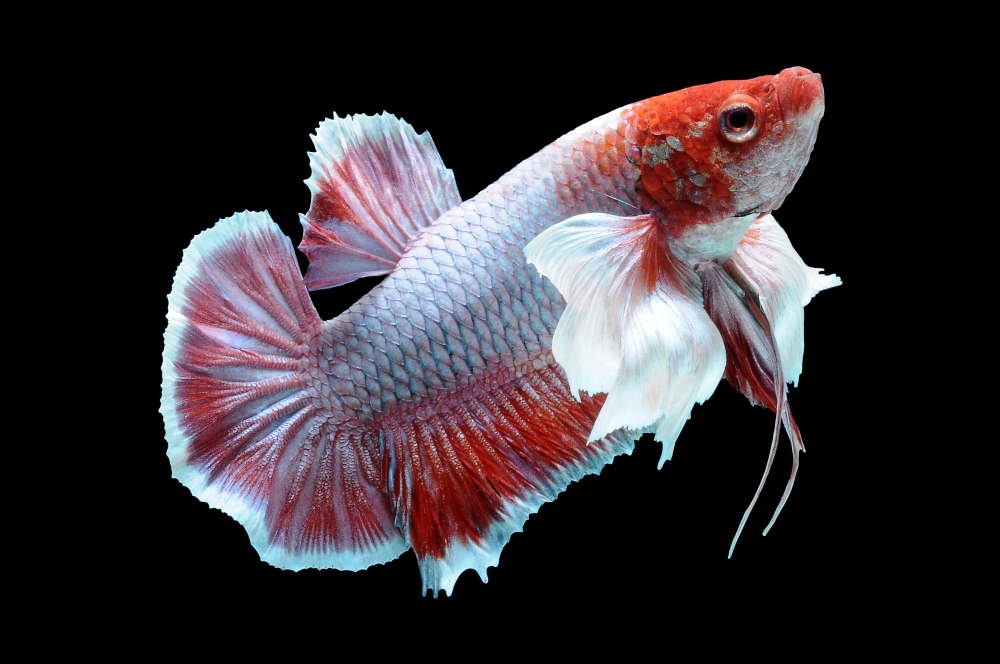
Plakat betta fish are found most commonly living in marshes and puddles in Thailand, Vietnam, and Cambodia. These betta fish are known to jump. In the wild, they will jump from puddle to puddle to find mates and fighting partners.
Plakat betta fish grow to be just less than three inches in length, and can be vibrant in color, as seen commonly in domestic plakats, or more grayish-brown, more commonly seen in wild plakats. They have shorter tail fins and slightly shorter bodies than other betta fish, which make them more able to endure injuries from fighting.
Because these fish are bred to fight, plakat bettas are more aggressive. Two males should not be kept together in the same tank. The tank should also be full of plants and other decorations to give the plakat a place to seek shelter as they would in the wild.
Stars and stripes betta
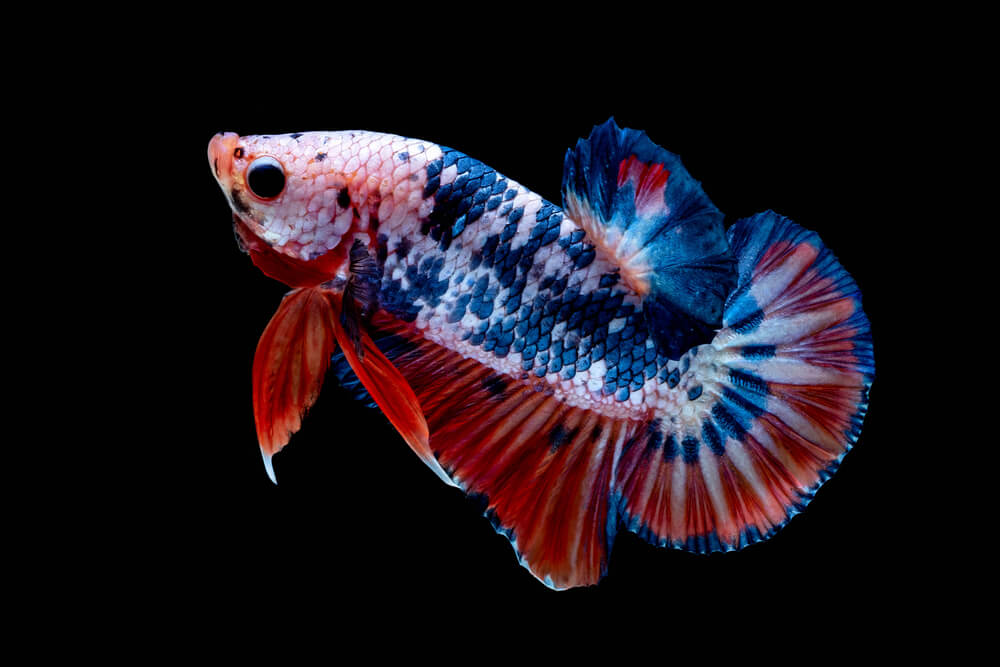
Stars and stripes betta are a unique species of betta fish. They have vibrant colorings, including radiant fins and stripes along their body.
The male bettas are typically more aggressive than female betta fish, and both are best kept in a tank alone due to their more aggressive nature.
Candy koi betta

Candy koi betta are identified best by their range of colors. They are typically a combination of red, blue, yellow, and black, with patches of these vibrant colors all over their body.
Candy koi betta tend to be more aggressive than some other siamese fighting fish. Because of this, it is better to have them be the sole betta fish in the tank, and be kept alone or with other bottom dwelling fish.
With the right conditions, candy koi betta can live up to three years.
King betta
King betta fish get their name from their slightly larger bodies in comparison to other betta fish. Their bodies are a little bit longer than other betta fish, but their fins are a bit shorter.
King bettas are vibrant in color, ranging from blue, orange, green, and red.
King bettas can live with smaller, bottom-dwelling tankmates, but prefer to be kept alone and as the singular betta fish in the tank. This is due to their aggressive, wild nature.
Crowntail betta
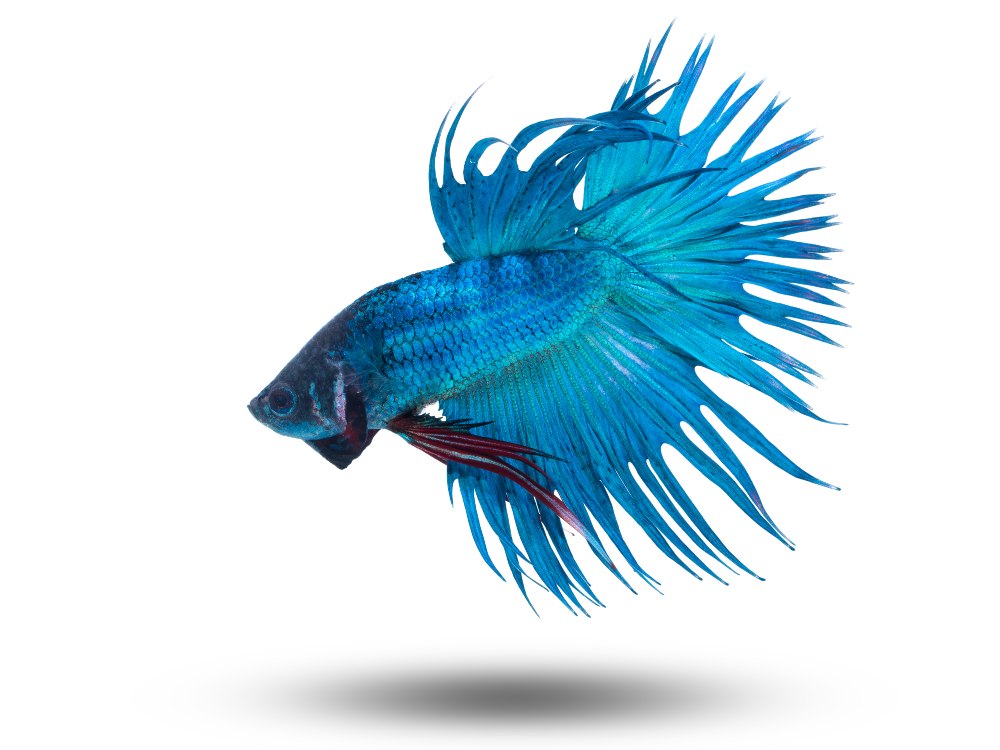
Crown tail bettas are native to Southeast Asia, located in Thailand especially. These fish usually have darker bodies with more colorful tails. They come in a wide range of colors. Their mouths are upturned and hinged.
The identifiable feature of the crown tail betta fish is the separation between their fins. This separation gives their tail a spiky or crown-like look. They grow to be around two and a half inches.
Due to the many separations, they have very delicate tails and fins. Owners need to be careful what goes in the tank as their fins could get caught and damaged.
These fish are aggressive in nature, and prefer to be the only betta fish in the tank. They can be kept with smaller bottom dwelling fish, but overall are not good community tank fish.
Half sun betta
The half sun betta is a selective bred betta fish that comes from breeding the halfmoon betta and the crowntail betta. They have short and shallow tail edges that look like the outer edge of the sun. You’ll notice that a halfmoon betta has smooth edges around their tails whereas the half sun looks more like spikes.
Rosetail betta
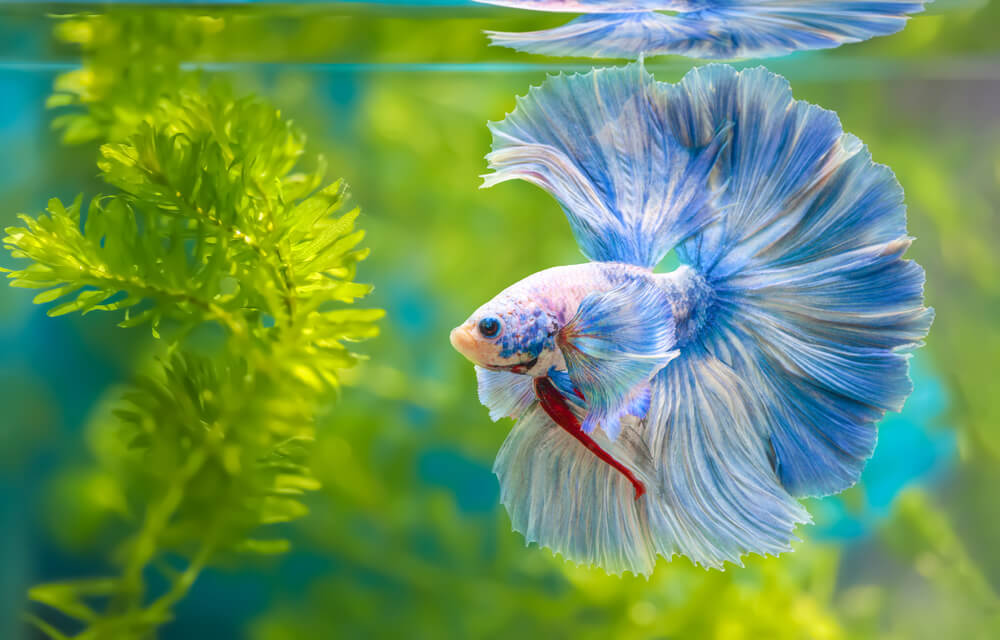
The rosetail betta is a result of selective breeding. They get their name from their flowing tail shape that replicates rose petals.
This breed does have its problems. Rosetail betta fish may have increased exhaustion as a result of their long tail making it harder to swim.
It is better to have a shallower tank to make it easier for this betta fish to reach the top for food and air. Fill the tank with live plants so that they don’t get caught in their tail. Fake plants or other hard plastic decor could rub against the tail, and could cause injury.
Veil tail betta

The veil tail betta has a long, flowing, and almost translucent tail. They grow up to two inches in length. They vary in colors such as red, orange, pink, blue, white, and green. The male fish are usually more colorful than the females. They are relatively easy to breed, and live for about two to four years.
The veil tail betta is more peaceful and calm than other types of betta fish . These fish can live with other types of fish, but it is still best to only have one male veil tail per tank. Keeping plants in their tank gives them secure hiding spots, which replicates their natural habitat.
Double tail betta
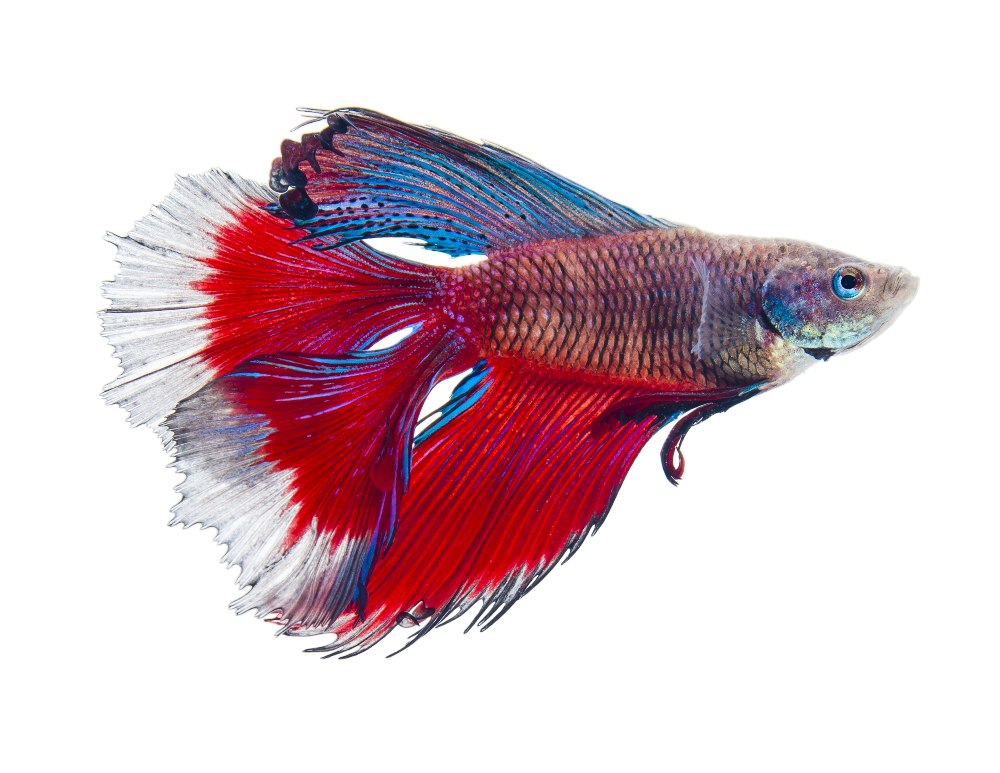
The double tail betta get their name from the split in their tail, giving the illusion of two tails. These fish come in many colors. Male double tail bettas generally have longer tails and fins than the females. The double tail bettas grow to be about two to three inches in length.
Double tail betta fish can be aggressive, and should be kept alone or with other bottom feeding fish.
Double tail betta fish like to have places to hide, so it is a good idea to keep plants and other decorations inside their aquarium.
Betta Channoides (Snakehead betta)

Betta Channoides, also known as snakehead bettas, get their nickname from their shape. They are mouthbrooding fish, which gives their mouths a larger size in comparison to other types of siamese fighting fish.
Snakehead bettas have reddish-orange fins with a white border around the outside edge. These fish are typically smaller, with males growing up to two inches maximum, and females usually smaller than two inches.
This species have a more peaceful temperament and are able to live with other kinds of fish peacefully. Male and female snakehead bettas may fight if they are kept in too small of a tank, but they can live together without fighting with adequate space.
Round tail betta
Round tail betta fish have a rounded tail, just as their name suggests. They are often confused with Delta betta fish, but differ in their tail edge shape.
Butterfly betta
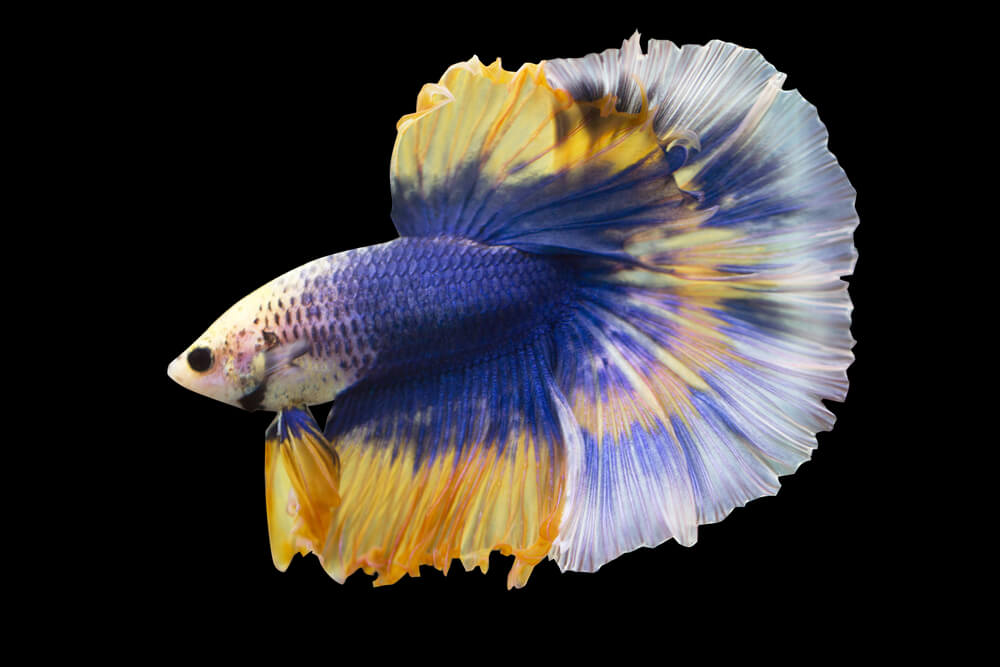
The butterfly betta fish have a unique appearance. They are brightly colored, and their shape resembles a butterfly, hence their name. They typically grow to be around three inches in length.
Butterfly bettas are generally more aggressive and territorial. They should be kept as the sole betta fish in the tank in order to create a peaceful environment for the fish.
Dragon scale betta
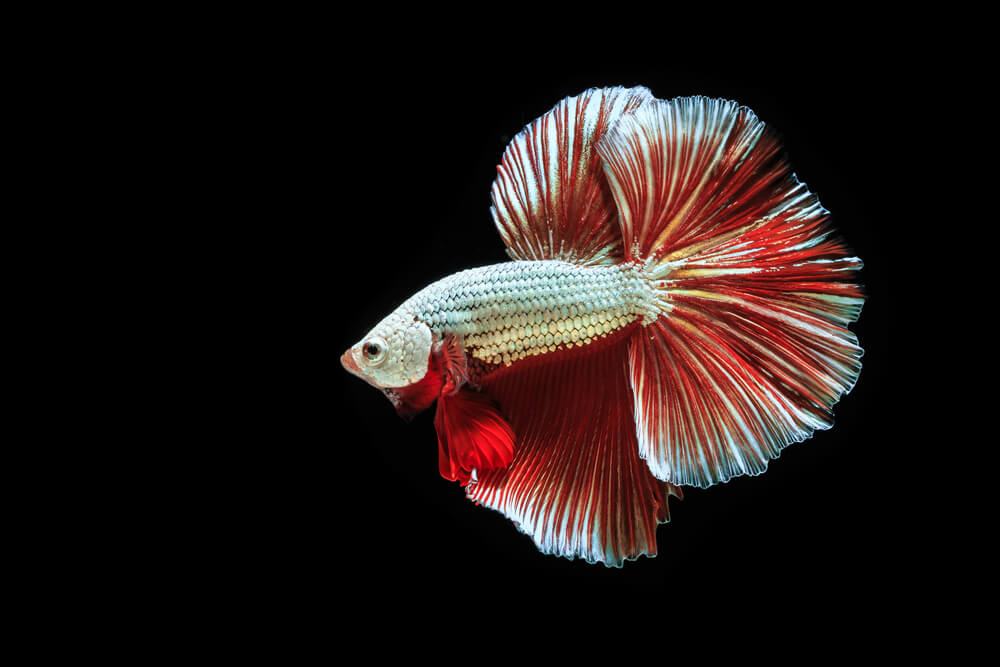
Dragon scale bettas are easy to differentiate from other betta fish. They have bigger, more prominent scales compared to other bettas, which often look like their outlined in black—making them stand out even more. Their scales shimmer a metallic hue. Dragon scale bettas grow up to three inches in length.
They can be more aggressive, and are better kept as the only betta fish in the tank.
Dragon scale betta do have their downsides. They have the possibility to go blind as a result of their larger scales growing and covering their eyes.
Albino betta
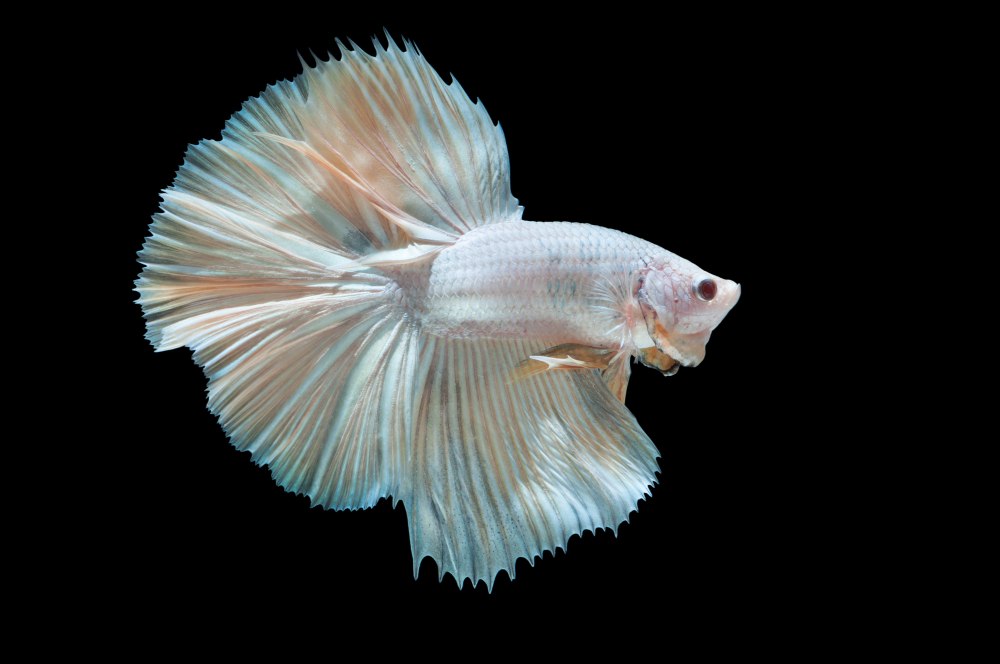
Albino bettas are one of the rarest kind of betta fish. Their body is all white, and true albino bettas have red or pink eyes.
Because of the lack of pigment in the body of albino betta fish, light has the ability to shine through, even showing off their organs in the right lighting. Sometimes, this may make the betta fish appear to have a pale pink body.
Betta Imbellis
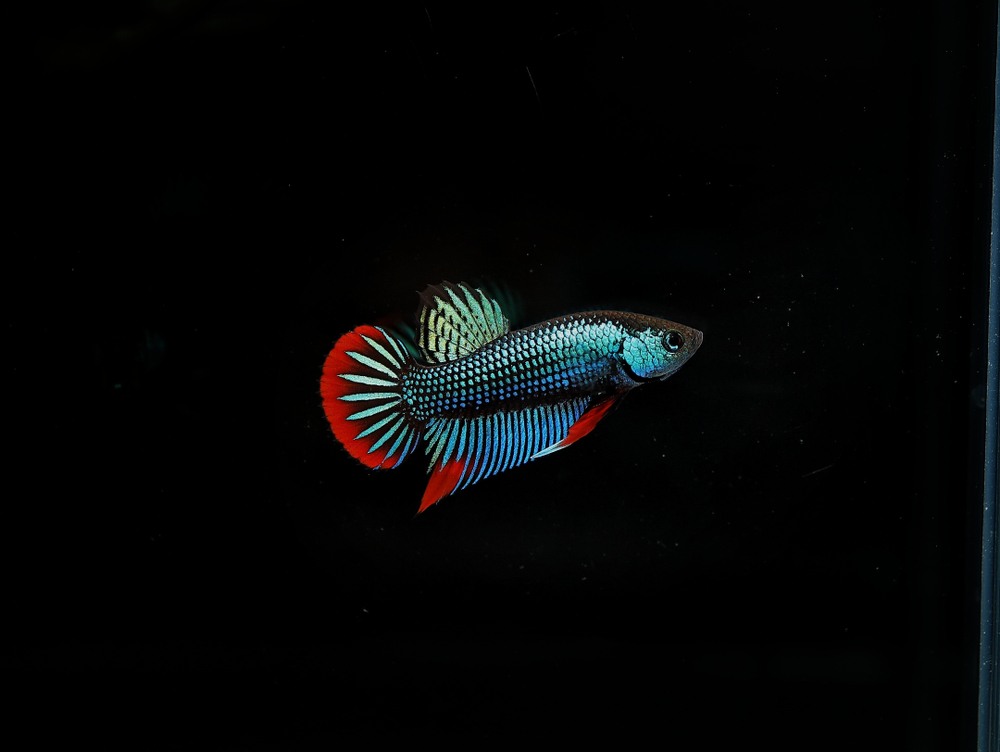
Betta Imbellis, also known as the peaceful betta, is vibrant in color and has a crescent-shaped tail. The male peaceful betta fish range from blue to emerald green, while the females often have a more muted hue. Their tails are vibrant red and form a perfect crescent around the edge of the tail fin.
The Peaceful betta fish get its name because of its ability to live in a community tank, and even in pairs if the tank is of adequate size.
Alien betta

Alien bettas are one of the rarest and most expensive types of betta fish. They are a result of breeding domesticated betta splendens with wild betta fish, and have a striking color and appearance. They share they same traits as betta fish, such as aggressiveness, and require the same level of care.
You can try breeding your own alien betta fish but it can be hard to predict what the betta fry will grow up looking like, therefore, if you want an alien betta fish, your best bet is to pay a little extra and seek one out from an experienced breeder.
Betta Mahachaiensis
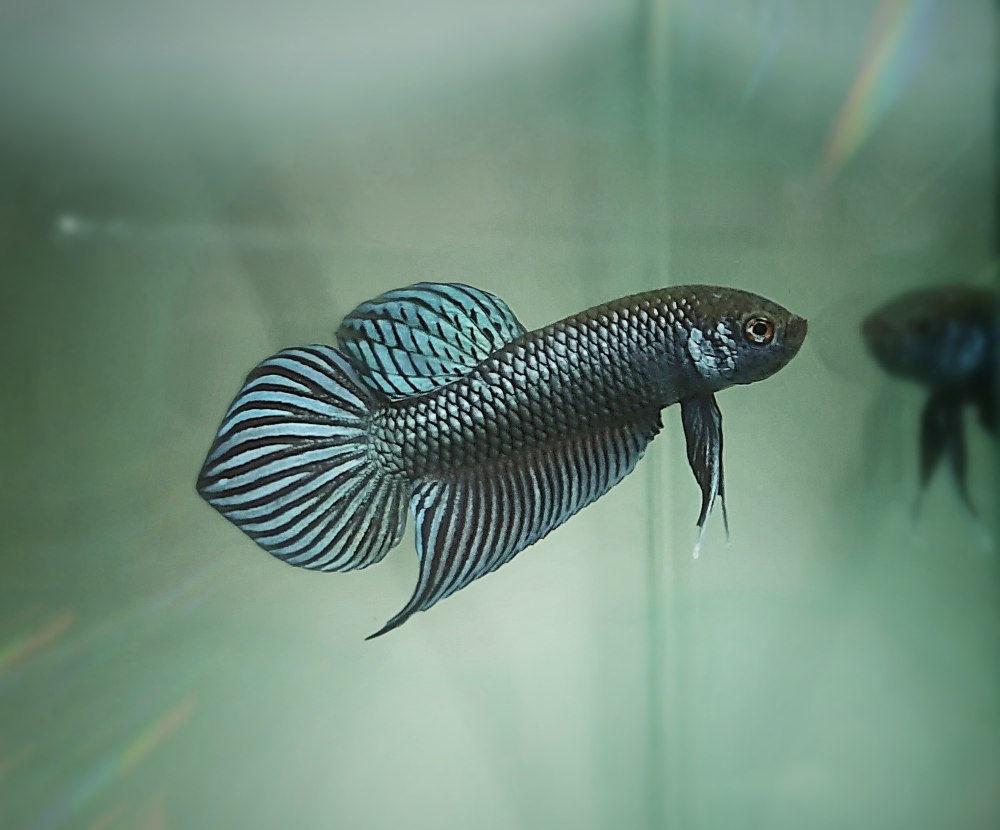
Betta Mahachaiensis is one of the largest members of the betta splendens family. It’s a wild betta fish and was recently discovered in 2012.
They have a unique green-blue hued scales with a black body, giving them an incredibly unique appearance. Domestic bettas lack the iridescent green color, and they also don’t have the black, brownish contrasting body, which is how you can tell the difference between a domestic betta and a wild Mahachaiensis betta.
They live in the Samut Sakhon province in the Southwest of Bangkok, and prefer living in waters where there are lots of nipa palm trees. Nipa palm trees provide plenty of hiding places and shade for the Betta Mahachaiensis.
Although it’s a wild type of betta fish, you can still domesticate it, as long as you provide an adequate tank environment. Betta Mahachaiensis enjoy large tanks with plenty of shade and lots of hiding places.
They are carnivorous fish who prefer eating live or frozen proteins over dry fish food and fish pellets.
Betta Macrostoma
The Macrostoma species of betta fish is said to be one of the most unique and sought after species of betta fish. This species is a vibrant orange color, and has a larger mouth than other betta species. Their mouths are entirely black, and their fins have black patterns on them.
This species can be difficult to care for an inexperienced aquarist. Usually, these fish are fairly peaceful and like to be kept in pairs of one male and one female.
Other types of betta fish
There are more families of betta fish, but these ones are uncommon for breeders to breed and sell. They include:
- Betta Smaragdina
- Betta Unimaculata
- Betta Hipposideros
- Spotted betta
- Betta Albimarginata
- Krabi Mouth-Brooding betta
- Betta Persephone
- Betta Brownorum
- Betta Rutilans
- Betta Mandor
- Betta Livida
- Betta Budigala
- Betta Pallifina
- Betta Chini
- Betta Strohi
- Betta Chloropharynx
- Betta Miniopinna
- Betta Tomi
- Betta Spilotogena
Conclusion
There are many different types betta fish to chose from to add to your aquarium. Learning about the different types of betta fish is important for the health of the betta fish, as well as the overall health of the aquarium. Ample research is required to ensure you choose the right species of siamese fighting fish for your tank.
